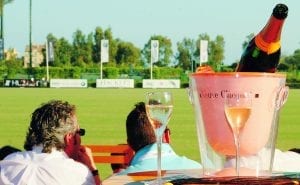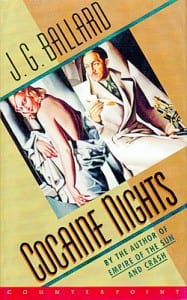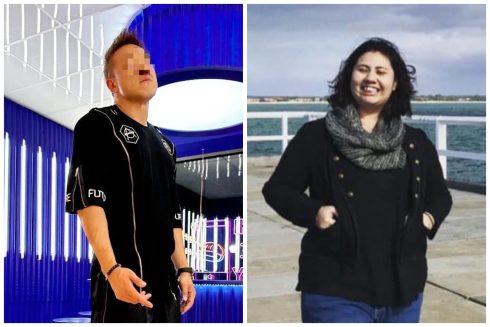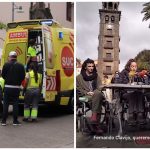By Jon Clarke
ON the wall of Jose Maria Solano’s seminal Sotogrande restaurant, Midas, is an intriguing snapshot that well sums up the millionaires’ enclave.
Alongside a series of evocative photos – including one of a fox hunt setting off nearby – is a picture of Britain’s future monarch Prince Charles’ accepting a polo prize from a grande dame of Spain’s leading Domecq family.
In his polo kit, the photo of the handsome young prince, lightly perspiring, perfectly encapsulates why this 4,400 acre private estate – Spain’s largest – is one of Europe’s most exclusive hideouts.
Long an escape for the British royal family at summer time (Prince Andrew, the Duchess of York, Prince William and Harry and princesses Eugenie and Beatrice are regulars) the majority of villas cost over a million and the security gates are manned 24-hours a day.
It is hard to imagine then, that JG Ballard’s cult novel Cocaine Nights is said to have been set inside the millionaires’ playground.
This is a world of privilege, where Russian oligarchs sip cocktails with British debutantes
Telling the story of a gruesome murder taking place in a disgruntled upper middle class community living in a gated community hell, known as Estrella del Mar, it couldn’t seem further from the truth.
There is certainly nothing downbeat or depressing about the place.
The clean, leafy streets, the beautifully kept mansions, the almost exotic private gardens. This is a world of privilege, where Russian oligarchs sip cocktails with British debutantes, Argentinian polo players hang out with German ad men and London account managers take lunch with American media moguls.
Throw in a colourful mix of celebrities, including Rod Stewart, Mariah Carey, Mike Rutherford of Genesis, Antonio Banderas, Glenn Hoddle and Eddie Jordan, who either have homes here, or have been spotted on holiday, and you have quite a power base.
Unlike, its near neighbour of Puerto Banus, where ostentation knows no bounds, in Sotogrande – the Bishop’s Avenue of Andalucia – people actively dress down.
This is an international scene, understated and mostly without a need to show off its wealth.
“It is an incredibly privileged place, full of wealth,” says Suzi Langley, of Sotograndebased media company PLC, who grew up amid its leafy confines and attended its celebrated Sotogrande private school.
“It is a great place to bring up a family, as it is extremely safe and there are loads of sports on offer, such as polo, tennis, golf and football.”
Argentinian expat Valeria Alfie agrees: “Sotogrande is a place for international, world travellers, who mostly have the best of everything. People don’t come here to show off their money. These are low profile, understated people, who don’t wear Prada
or gold Rolex’s.”
But, that is not to say they can’t afford it.

This is, after all, where, according to the Sunday Times, Spain’s most expensive real estate can be found.
In particular is one house, La Manzana, owned by the former boss of French brand Cartier, that three years ago went on the market for a whopping 24 million euros.
More of a small palace than a villa, it was described by local agents as “Andalucian neo-Palladian with a hint of Mudejar”, but was really just, well, basically large.
Set in five acres and taking up seven plots of the estate, the house counted ten bedrooms, a gym, walk in safe, not to mention a sauna, staff quarters and a 16mlong infinity swimming pool.
The sort of place the Great Gatsby would have bought and holed up in, it looks more like a hotel than a private property.
The childrens’ Wendy house in the garden looks more expensive than the average Fuengirola apartment.
While things have generally now dropped in price a little (perhaps as much as 30 per cent, according to some local agents), the average home in Sotogrande is still weighing in at 1.5million euros.
It is for this reason that you get a lot of high-powered businessmen, celebrities and sportsmen buying in the area.
There are certainly plenty of English footballers buying in the area, including Shay Given, Glen Johnson and former England manager Glenn Hoddle.
Unsurprisingly, with its connections to golf and polo, the place counts roving UK trade ambassador Prince Andrew as a regular visitor.
A frequent summer tourist, along with his ex-wife Fergie, the Duchess of York, this year he acquired a large house in nearby San Enrique, reportedly rent free.
Normally spending a month in the resort with her two daughters Beatrice and Eugenie, this summer her ex-husband Prince Andrew flew in specially to attend daughter Beatrice’s 22nd birthday.
And, of course, one must not forget the princes Wills and Harry, who have often taken a turn on the green baize of the Santa Maria polo club, now said to be one of the best polo clubs in Europe, with around a dozen pitches.
With games taking place throughout the summer, it is an excellent place to see how the other half live, take a glass of champagne and step in the divots after each chukka.
Sandwiched between the Rock of Gibraltar and the Sierra de Almenara, it was a real masterstroke to set this millionaires’ playground here.
The dream of a millionaire businessman who wanted to build paradise
Sotogrande’s origins started with the dream of a millionaire businessman Colonel Joseph McMicking, who “wanted to build Paradise”.
The Philippines-based entrepreneur had already created Makati, an exclusive satellite city for the affluent elite of Filipino society, and in 1962 he decided to try the same in Spain.
He sent his Spanish cousin to track down the perfect location and eventually managed to secure five adjoining estates fronting the Mediterranean which, rapidly amalgamated, became the basis of Sotogrande.
Back then there was practically nothing there apart from the odd cortijo and a few flocks of sheep and goats. Its strongest selling point was its location near to Gibraltar and the views towards the landmass of Morocco in the distance.
It was before the advent of mass tourism and land along the Costa del Sol was seen as cheap, unproductive land that could generally be acquired for next to nothing.
At the mouth of the River Guadiaro that originates in the hills above Ronda, the beaches were perfect as was the rolling, but not too steep terrain.
This was the ideal spot to build a golf course, which was to be the main foundation of the resort.
They drafted in one of the world’s best known course designers and designed what is now known as the ‘Sotogrande old course’.
It was the first course in Europe to have automatic sprinklers – 472 of them, discreetly serviced by 100 miles of underground cable.
Following the Makati model, McMicking began selling plots as high class, low-density residential developments.
Employing the services of the well connected society lady Carmen Guerrendiain, formerly of Madrid’s Ritz hotel, it had soon become one of Europe’s hippest places to invest in.

Alongside Marbella a few miles east, suddenly the world’s movers and shakers, celebrities and sportsmen started to have an alternative to San Tropez, Positano and Deauville.
Further golf courses followed fast – there are now five – and by 1985 the resort also counted a tennis club, croquet club, not to mention polo, sailing, wind-surfing and beach clubs, as well as stables for 200 horses. McMicking’s paradise was coming into effect.
The infrastructure certainly seems to have held up well.
The almost unique development, now known as a EUC (Entidad Urbanistica de Conservacion), has quite a few more homes, but it still feels low density and privileged.
“The concept of a private urbanisation, with private roads, run by the community is rare,” says Ian Bateman, of Holmes estate agent. “But it has certainly worked well here.”
There are those, of course, who argue that Sotogrande is a false paradise.
Divorced from real Spain, with no real culture, it’s a makebelieve world for the idle rich and golfing bores.
JG Ballard was anything but flattering about the resort.
In his book Cocaine Nights, he described Sotogrande as “a town without either centre or suburbs… little more than a dispersal ground for golf courses and swimming pools.”
Yes, there certainly are plenty of pools and golf courses here.
But 16-metre infinity pools and a round at Valderrama golf course sure beats hanging out with tattooed timeshare touts and pie-eating footie fans just half an hour up the coast.










You forgot to mention the dream hit the buffers when Franco closed the border and Sotogrande became like a Nevada tin mining town after the lode played out. It is all so neatly twee-suburban laid out that you feel like standing in the middle of the road and shouting ‘B*ll*cks’ at the top of your voice.
Interesting read. Sotogrande has the best golf courses on the Costa del Sol.
Good article but only one comment from someone who has lived here over 30 years and been close to the polo world – the polo fields are so well made that there is no need to step in the divots!!!
We love Sotogrande , kids love Sotogrande and infact the majority who come here love it
I liked Sotogrande….. because its nice. There was a poster of a dog at the entrance of the port who looked like he had his willy hairsprayed. It made my son, Frank Glennister really laugh!!! There were lots of posh people around but i didn’t speak so they didn’t realise I am a council tenant. If my benefits could be collected in sotogrande i would move there tomorrow!!
i lived in publo the next town but work in soto grande port many years ago but i have family and friends in spain and in soto it is such a lovley place to live work and party the locals are amazing people, if you have never been i would strongly say go for it ( coz your werth it :) ) xx